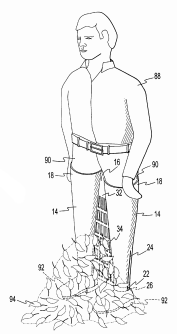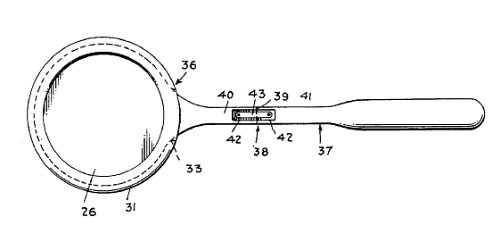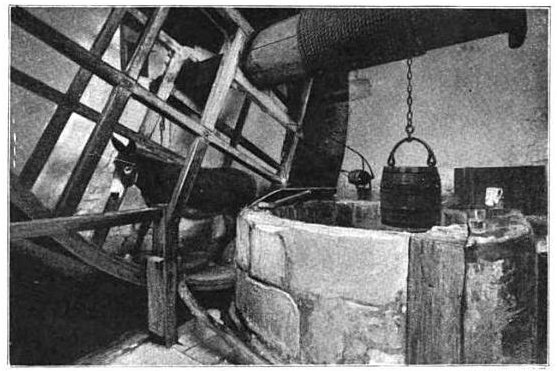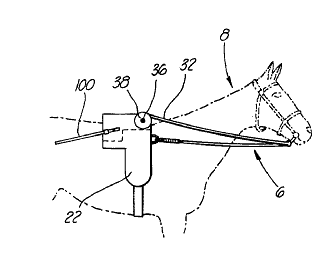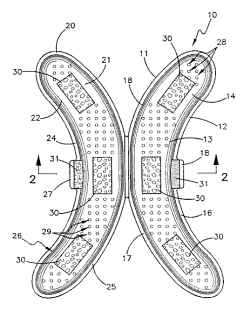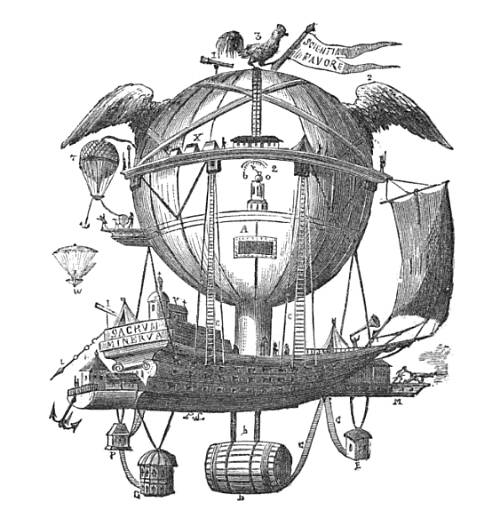
The promise of the balloon led equally to rhapsody and raillery in the early 19th century. In 1804 an inventor named Robertson reached the pinnacle of self-satire by proposing “an aerial vessel destined for discoveries” that might tour the world. The Minerva would carry 150,000 pounds, he said, and accommodate 60 passengers:
“The cock (3) is the symbol of watchfulness; it is also the highest point of the balloon. An observer, getting up through the interior to the point at which the watchful fowl is placed, will be able to command the best view to be had in the ‘Minerva.’ The wings at the side (1 and 2) are to be regarded as ornamental. The balloon will be 150 feet in diameter, made expressly at Lyons of unbleached silk, coated within and without with india-rubber. This globe sustains a ship, which contains or has attached to it all the things necessary for the convenience, the observations, and even the pleasures of the voyagers.”
(a) “A small boat, in which the passengers might take refuge in case of necessity, in the event of the larger vessel falling on the sea in a disabled state.”
(b) “A large store for keeping the water, wine, and all the provisions of the expedition.”
(cc) “Ladders of silk, to enable the passengers to go to all parts of the balloon.”
(e) “Closets.”
(h) “Pilot’s room.”
(l) “An observatory, containing the compasses and other scientific instruments for taking the latitude.”
(g) “A room fitted up for recreations, walking, and gymnastics.”
(m) “The kitchen, far removed from the balloon. It is the only place where a fire shall be permitted.”
(p) “Medicine room.”
(v) “A theatre, music room, &c.”
— “The study.”
(x) “The tents of the air-marines, &c. &c.”
“This balloon is certainly the most marvellous that has ever been imagined — quite a town, with its forts, ramparts, cannon, boulevards, and galleries,” noted Fulgence Marion in Wonderful Balloon Ascents (1874). “One can understand the many squibs and satires which so Utopian a notion provoked.”

